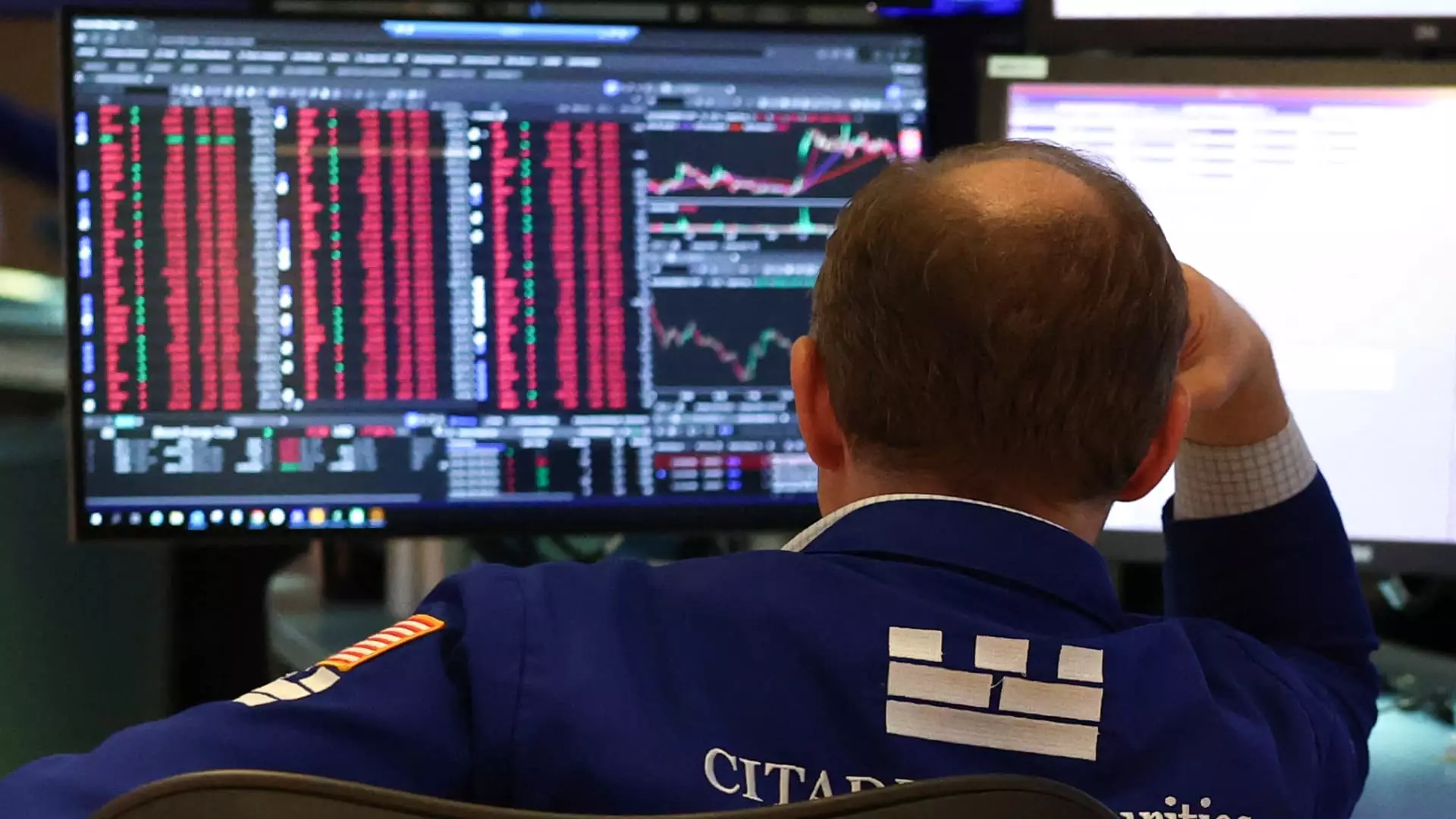The recent plunge in global bond yields is not just a trivial financial hiccup; it represents a substantial alarm bell for investors everywhere. Following Donald Trump’s controversial tariff announcement, markets reacted predictably, with yields on government bonds collapsing as nervous traders rushed for cover. The yield on Germany’s 10-year bund, an influential indicator within the eurozone, fell from 2.72% to 2.59% in a matter of days. This dramatic decline exemplifies how quickly fear can grip the market. When yields fall, it highlights soaring demand for government debt and signals that investors are not just cautious but outright terrified.
This is not simply an isolated event but rather a piece of a broader puzzle reflecting the unpredictable landscape of global economic policy. Rabobank analysts aptly noted that a reversal of Trump’s tariff stance could momentarily stabilize the panic but ultimately would reinforce the foremost issue at hand: the unpredictability surrounding fiscal policies. In an era where bold, rash decisions seem to be the norm, risk aversion becomes the reigning sentiment.
The Discrepancy of Risk and Policymaking
Closer to home, the American 2-year Treasury yield recently sank to its lowest point since September 2022, resting around 3.58%. Meanwhile, drops in the 10-year yield indicate a strong sentiment of fear among investors, demonstrating a lack of confidence in future economic stability, not merely from tariffs but also from the overarching environment created by erratic policymaking.
Economists are now, more than ever, scrutinizing extreme tariff policies and theorizing about their long-term repercussions. With central banks likely to adjust their strategies in response, the perception of risk grows. This scenario creates a vicious cycle, where falling treasury yields reflect fears of recession, leading to investor panic, which in turn affects market confidence even more severely.
The euphoria seen in the stock market over the past few years has quickly dwindled. With markets facing steep losses, it’s becoming clearer that the once-thriving global equity market is undergoing a painful selloff, something George Lagarias of Forvis Mazars aptly termed an “overbought global equity market.” As bonds rally amid market volatility, one must ponder the sustainability of this bullish sentiment.
Cycles of Fear: A Bearish Undertone
While the recent bond rally could superficially suggest investor optimism in a crisis, the truth is far grimmer; this safe haven is merely the eye of the storm. Yes, bonds currently act as a refuge for those fleeing an unstable market. However, Lagarias warns that this could be fleeting. Investors may hardly begin to feel secure if central banks—intent on maintaining economic momentum—begin to intervene decisively.
There’s also the pressing issue of inflation, which complicates the investment narrative further. With inflationary pressures still looming large, many are questioning the wisdom of long-term bond investments. This isn’t just speculation; it begs the question: is riding the bond wave truly a wise investment strategy, or are investors simply masking fears of deeper underlying issues?
Moreover, should banks attempt to ease balance sheet burdens by flooding the market with bonds, that would very likely trigger a further dip in bond prices. While currently a haven, the very nature of bonds could shift rapidly as external factors drive market demand lower.
Cautious Optimism or Precarious Despair? A Divergent Landscape
The newfound flight to safety may be interpreted as reluctant capitulation among investors who have been steeped in optimism for far too long. Yet, lurking beneath this panic is the nagging question of what happens next. Current market behavior reflects a collective rejection of risk, not merely an understanding of what’s forthcoming but rather a pressing fear of what may come with the volatility of the current political climate.
To potentially avert collapse, central banks may need to assert their presence in the markets. Whether through strategic credit lines, direct bond purchases, or verbal affirmations of intent, the efficacy of these measures must be weighed carefully against public sentiment. The stakes have never been higher, and for investors, a vigilant, almost paranoid approach might be the only prudent path forward in these tumultuous times. The bond market is desperate, and for many, the fear of missing out on further gains could exacerbate the crises waiting in the wings.


Leave a Reply